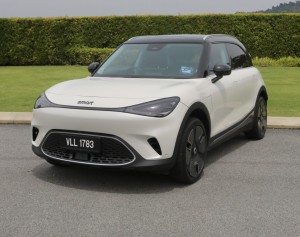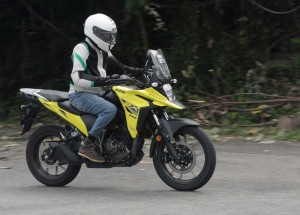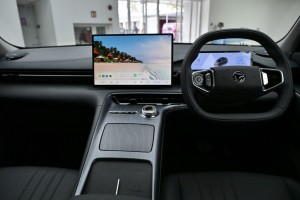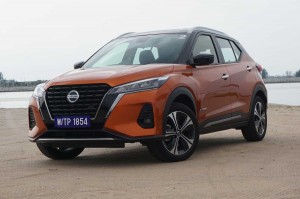Malaysian EV sales expected to move up a gear
By THE STAR | 04 June 2024
PETALING JAYA: The rationalisation of diesel and petrol subsidies may increase the appeal of electric vehicles (EVs) compared with the internal combustion engine (ICE).
With ongoing plans by the government to beef up the EV charging infrastructure, it could be a matter of time before registrations of such vehicles pick up pace and grow further.
This is the result as the cost to fuel ICE vehicle journeys will see a hike as prices at the pump are floated, although with targeted subsidies the effect will be mitigated among a portion of people who are eligible for these government payouts.
The government’s plan is to have EVs constitute 15% of the total industry volume (TIV) by 2030 as its near-term target.
The rise in the price of diesel and/or soon for petrol at the pump may be the key catalyst that will spark further growth in the EV segment of the automotive industry locally.
As investments continue to pour into the EV/hybrid segments and away from ICE vehicles, further technological advancements due to research and development in the former may increase its attractiveness among the public.
A case in point is the recent new product announcement by BYD which at the end of May unveiled a game-changing hybrid vehicle that’s capable of travelling more than 2,000km without recharging or refuelling.
These are the long-range hybrid models called Qin L and Seal 06 – sedan cars from China that’s competitively priced at some US$13,800, according to reports.
The distributor for BYD in Malaysia, Sime Darby Motors, said the increased variety of EVs would increase its demand moving forward.
“We foresee an encouraging growth of EV adoption locally and Sime Darby Motors is ready to support the EV ecosystem in Malaysia.
“We are proactively accelerating the transition to EVs in the automotive sector, spearheading Malaysia’s aspirations for a low-carbon mobility future,” Sime Darby Motors managing director of South-East Asia Jeffrey Gan told StarBiz.
Gan noted that while ICE vehicles remain prevalent currently, he expects EVs will continue to gain traction in Malaysia.
“Particularly, as we move towards e-mobility, battery EVs or BEVs offer improved sustainable transportation solutions which also help to drive demand. As battery and manufacturing costs continue to decrease globally, we are hopeful that more affordable BEV models will become available to Malaysian consumers over time,” he said.
Gan believes there is tremendous potential for BEVs to become very prevalent in Malaysia, similar to what is happening in China.
But this would also depend on expanding the EV charging infrastructure.
There would also need to be supportive policies to ensure BEVs become accessible to the wider public.
Even though there are plans to expand charging infrastructure in the country, there needs to be more specific plans for charging needs in areas such as condominiums before a more broad-based uptake of such vehicles can be seen.
“Accessibility and availability can be limited even with more public charging infrastructure, particularly in more rural areas or strata residential properties,” he said.
Still, he noted that growing the nation’s charging infrastructure plays a vital role in alleviating range anxiety among potential buyers.
“Hence, increasing the number of charging stations will be a key factor in attracting more EV users,” Gan noted.
Apart from that, improving the after sales support ecosystem is also key not only among original brands and their service personnel but also the wider industry.
This could progress and take place eventually as third-party service providers will need to upskill their technicians and invest in the necessary technicalities, equipment and facilities to properly service and maintain BEVs, said Gan.
Another variable that will impact the EV outlook in Malaysia is the road tax rate structure for EVs in the country. At present, EVs enjoy free road tax until end-2025.
Transport Minister Anthony Loke's announcement today would help promote the use of EVs. He said EV owners would enjoy a reduction of up to 85% in road tax fees once the tax holiday ends.
Loke said the new road tax structure would cover both pure battery electric vehicles (PBEV) and fuel cell electric vehicles (FCEV) and come into effect on Jan 1, 2026.
"The fee will be based on the power output of the electric motor, with a progressive increase in fees. "
Kenanga Research stated in a report late-May that it expects no impact for the affordable segment since its target customers, or the B40 group, will likely be spared the impact of the pending fuel subsidy rationalisation.
“However, the same cannot be said for the mid-market segment as its target customers – or the M40 group – may hold back from buying a new car (or even down trade to a smaller car to cut their refuelling bills) upon the introduction of the fuel subsidy rationalisation,” it said.
For new registrations of BEVs, it noted the growing trend for such vehicles in the country following recent car sales statistics released for the month of April.
“They are on track to meet the national target for EVs and hybrid vehicles to consist 15% of TIV by 2030, and 38% of the TIV by 2040,” Kenanga Research added.
Tags
Autos News
Reviews

7.6
Maserati GranTurismo (Mk2) Modena: Sharp and smooth operator

6.8
Triumph Tiger 900 GT Pro: Multi-talented adventurer

Hyundai Ioniq 5 N: Born rascal

6.6
Husqvarna Svartpilen 401: Inspiring retro design

8.8
smart #1 (Premium): Agile, engaging, roomy, premium motoring

6.6
Suzuki V-Strom 250 SX: Multi terrain warrior

Proton e.MAS 7 impresses in quick dynamic driving exercises

Nissan Kicks e-Power: Kicking off a new efficiency
Videos

StarCarSifu Editors' Choice Awards 2024: Top winners

The Snowball – Lamborghini’s Heartwarming Christmas Story of...

EVOGO battery swapping solution showcased at IAA Mobility 20...
